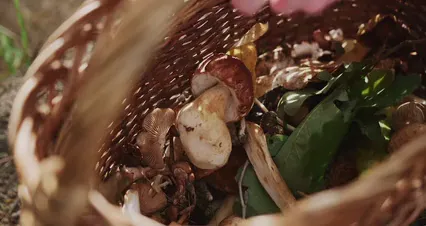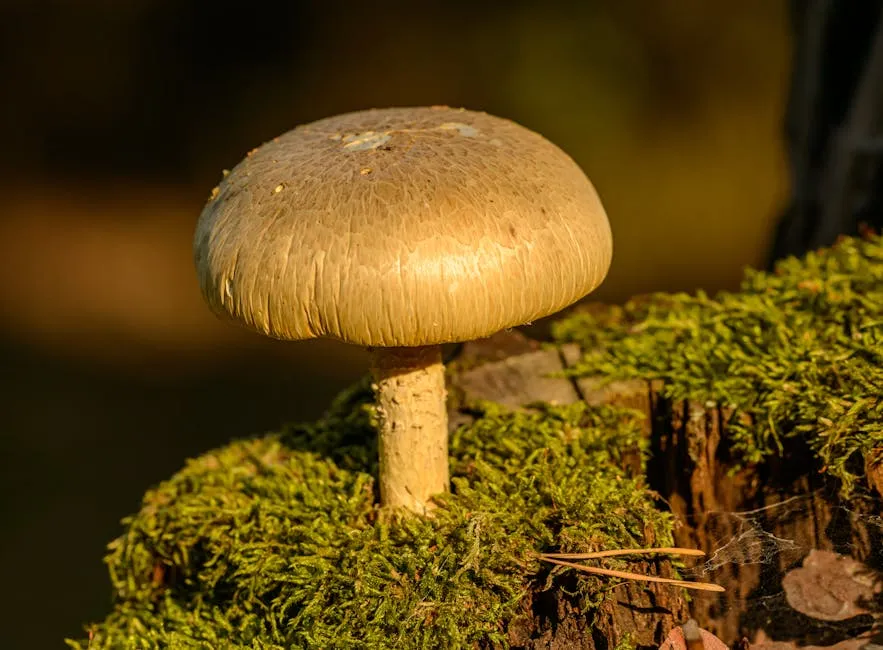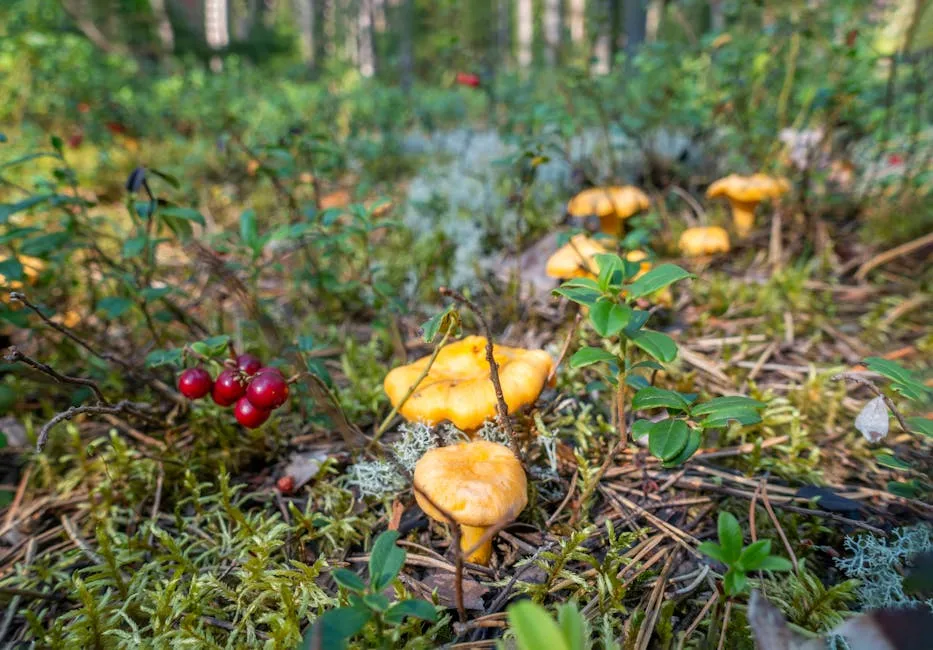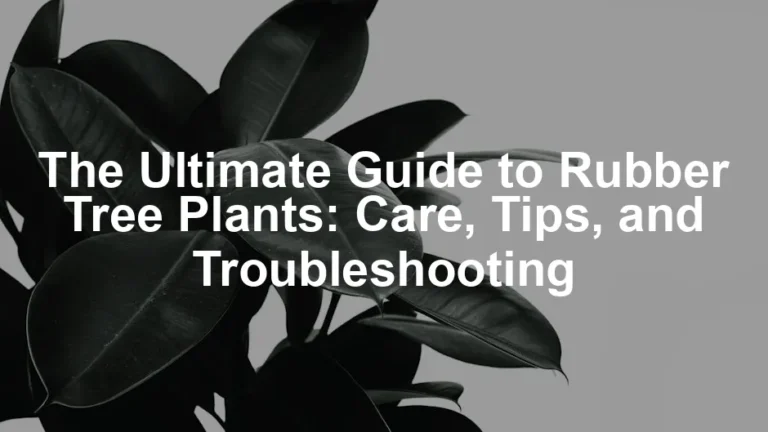

How to Grow Mushrooms at Home: A Comprehensive Guide for Beginners
Introduction
Mushrooms are the culinary equivalent of a magician’s hat: you think you know what’s inside, but surprise! A whole world of flavor and nutrition awaits. Whether you’re a seasoned chef or just someone who enjoys a fun DIY project, growing mushrooms at home can be both rewarding and delicious. In this guide, we’ll walk you through everything you need to know, from selecting the right type of mushroom to harvesting your first crop. Get ready to jump into the fascinating world of fungi and learn how to grow your own mushrooms right in your kitchen or backyard!
First off, let’s talk about why you should consider growing mushrooms. They are not just a culinary delight; they are packed with nutrients. Full of vitamins, minerals, and antioxidants, mushrooms can elevate your dishes while contributing to a healthy diet. Imagine plucking fresh mushrooms and tossing them into your pasta or salad. Yum!
Mushrooms thrive in various environments, making them suitable for indoor and outdoor cultivation. You don’t need a sprawling garden to grow them; even a small kitchen counter can serve as a perfect growing space. Plus, with mushroom growing kits available, even beginners can dive into this adventure with ease.
But don’t just think about the taste. Growing mushrooms can be a fun science experiment! Watching spores turn into fluffy mycelium and then into beautiful fungi is like nature’s magic show right in your home. You’ll get to witness the transformation firsthand, and trust me, it’s quite the spectacle!

Ready to roll up your sleeves? Throughout this guide, we’ll cover everything from the types of mushrooms you can grow to the best conditions for their growth. You’ll find step-by-step guides, troubleshooting tips, and even tasty ways to use your harvest. So grab your gardening gloves, and let’s get started on your mushroom-growing adventure!
Summary of Key Points
In this article, you will discover:
- Types of Mushrooms: Learn about the most popular varieties to grow at home, including oyster, shiitake, and lion’s mane mushrooms.
- Growing Conditions: Understand the optimal environments for mushroom growth and how to create them—whether indoors or outdoors.
- Methods of Cultivation: Explore different methods of growing mushrooms, from using kits to log cultivation and coffee grounds.
- Step-by-Step Guides: Get detailed instructions on how to prepare substrates, inoculate them, and care for your growing mushrooms.
- Harvesting and Using Your Mushrooms: Find out when and how to harvest your mushrooms, along with ideas for using them in your meals.
- Common Challenges and FAQs: Learn how to troubleshoot common issues that arise during mushroom cultivation.

Growing Conditions for Mushrooms
1. Temperature and Humidity
Mushrooms are picky about their environment. Different types have unique temperature preferences. For instance, oyster mushrooms thrive around 20-24°C (68-75°F). Shiitake mushrooms prefer cooler conditions, around 15-20°C (59-68°F). Meanwhile, lion’s mane mushrooms like it chilly at 15-18°C (59-64°F).
Humidity plays a vital role in mushroom growth. They crave moisture, typically requiring humidity levels between 80-90%. To maintain this, mist your growing area regularly. You can also use a humidity tent for plants or a simple plastic bag to trap moisture. Just remember, standing water is a no-go!

2. Light Requirements
Mushrooms aren’t sunbathers; they prefer dim light. Many varieties, like oyster mushrooms, need only indirect light to grow. Bright sunlight can scorch their delicate caps. A simple solution? Place your growing containers in a shaded area or use a fluorescent light for a few hours each day.
For those growing indoors, consider using LED grow lights. They provide the necessary light without overheating the environment. Plus, they’re energy-efficient!

3. Location Options
Choosing the right location is crucial. You can grow mushrooms indoors or outdoors, depending on your space and conditions. Indoors, basements, garages, or even a cupboard can serve as perfect spots. Just ensure it’s dark and cool.
If you opt for outdoor cultivation, select shaded areas like under trees or near fences. Logs or shaded beds work well, too. Just keep them protected from direct sunlight and strong winds. With the right location, your mushroom adventure will flourish!

Step-by-Step Guide to Growing Mushrooms
1. Preparation
Before you channel your inner mycologist, gather your supplies. You’ll need mushroom spawn, a suitable substrate, and some basic tools. Common substrates include straw, coffee grounds, or even sawdust. If you want to keep it simple, consider buying a mushroom growing kit that includes everything needed.
Cleanliness is key! Make sure all your tools and workspace are spotless. Contamination can ruin your mushroom dreams faster than you can say “fungus.” Use disinfectants and keep your hands clean. A little effort goes a long way in ensuring a healthy crop.

2. Inoculation Process
Now it’s time for the fun part: inoculating your substrate! Start by ensuring your substrate is moist but not soggy. If you’re using straw, soak it in hot water for about an hour to pasteurize it. This kills off any unwanted microbes.
Once it’s cooled, mix in your mushroom spawn at a ratio of about 5-10%. Spread the spawn evenly and pack it down gently. Place everything in a clean container and cover it loosely. This allows air exchange while keeping the humidity up. Keep an eye on moisture levels—mushrooms love humidity but can drown in standing water!
Temperature control is crucial. Most mushrooms thrive best at temperatures between 20-24°C (68-75°F). Monitor this to ensure optimal growth conditions.

3. Colonization Phase
During the colonization phase, your substrate will be overtaken by the mycelium. This is the vegetative part of the fungus, and it looks like a network of white threads. You can expect it to take one to three weeks. Keep your container in a dark, warm spot during this time.
Look for signs of success! If the substrate turns white and fluffy, you’re on the right track. If you spot any green or black mold, it’s time to panic (or, well, throw it out). To troubleshoot, check your moisture levels and ensure your space is clean.

4. Fruiting Phase
Once colonization is complete, it’s time to induce fruiting. Move your substrate to a location with indirect light and lower the temperature slightly. This change in environment signals to the mycelium that it’s time to produce mushrooms.
Humidity is vital now! Mushrooms need around 85-90% humidity to form properly. You can maintain this by misting or using a humidity tent. Ensure they have fresh air by fanning them occasionally. Don’t forget to keep an eye on light exposure—bright sunlight is a big no-no!

5. Harvesting Your Mushrooms
At last! The moment you’ve been waiting for: harvesting your mushrooms. Timing is everything. Look for mushrooms with caps that have just opened but haven’t flattened out completely. Grab them at the base and twist gently to harvest.
Store your freshly picked mushrooms in a paper bag in the fridge. They can last about a week. Use them in soups, stir-fries, or just sautéed with garlic and butter. You’ve earned it!

Common Challenges in Mushroom Cultivation
Mushroom cultivation isn’t all rainbows and sunshine. You might face a few hiccups along the way. One common challenge is contamination. Always keep your workspace clean and use sterilized tools.
Pests can also be a problem. Tiny insects love mushrooms, too. If you notice any uninvited guests, you can safely remove them with a gentle wash or a pest control sticky trap.
Lastly, environmental factors can throw you off. If temperatures swing too high or low, or if humidity levels drop, your mushrooms may not thrive. Keep a close eye on these conditions to ensure a successful harvest.

1. Contamination
Mushrooms are delicate little darlings, easily upset by unwanted guests. Contamination can ruin your crop faster than you can say “fungus.” To prevent this, always start with sterilized tools and clean environments.
Wash your hands and disinfect surfaces before you begin. Think of it as prepping for a fancy dinner party, only your guests are mushrooms.
Spotting contamination is like being a detective. Look for unusual colors or fuzzy textures. If you see green or black mold, it’s time to say goodbye to that batch.
Regularly check for signs of trouble during growth. A clean environment is your best defense. Use a simple plastic spray bottle to mist your mushrooms and maintain humidity without creating puddles. And remember, no standing water—mushrooms prefer to stay dry, just like your favorite pair of shoes!

2. Pest Control
Just when you thought it was safe to grow mushrooms, pests show up uninvited. Common culprits include fruit flies, mites, and gnats. These little pests can wreak havoc on your growing fungi.
To keep these nuisances at bay, always inspect your growing area. A clean space isn’t just for the mushrooms; it helps deter pests, too!
If you spot any unwanted visitors, don’t panic! Set up sticky traps or use a gentle soap solution to wash them away. You can also introduce beneficial insects like ladybugs, which are nature’s tiny pest control agents.
Remember, the goal is to keep your mushrooms happy, healthy, and free from the munchies of pests!

3. Environmental Factors
Temperature and humidity can be as fickle as a cat on a hot tin roof. Mushrooms thrive in specific conditions, so keep a close watch on the weather!
When temperatures fluctuate, mushrooms can sulk. Aim to maintain a steady temperature based on the type you are growing. For instance, oyster mushrooms love it around 20-24°C (68-75°F), while shiitake prefer a cooler approach at 15-20°C (59-68°F).
Humidity is equally important. Mushrooms crave moisture levels of 80-90%. If humidity drops, mist the area or consider using a humidity tent. Just be careful not to drown them—nobody likes soggy mushrooms!
For outdoor cultivation, timing is everything. Choose a shady spot and protect your precious fungi from harsh winds and direct sunlight. With the right conditions, your mushrooms will flourish, and your garden will be the talk of the town!

Conclusion
Growing mushrooms at home is not only a fun and rewarding hobby but also a great way to enhance your culinary repertoire. With the right knowledge and a bit of patience, you can cultivate a variety of delicious mushrooms right in your kitchen or garden. So why not embark on this flavorful journey? Your taste buds—and your family—will thank you!
Imagine the satisfaction of harvesting your own mushrooms, freshly picked for your next dish. Whether you toss them into a stir-fry or sauté them with garlic, homegrown mushrooms can elevate any meal. Plus, you’ll impress your friends with your newfound mycological prowess!
This adventure is not just about growing; it’s about learning, experimenting, and enjoying the fruits of your labor. So, grab some supplies like a compost bin, clear a space, and start your mushroom-growing escapade! You’re on the path to becoming the mushroom master of your kitchen. Enjoy the process, and happy growing!

FAQs
What is the easiest mushroom to grow at home?
If you’re just starting out, oyster mushrooms are the way to go. They grow quickly and thrive on various substrates, like coffee grounds and straw. Shiitake mushrooms are another excellent choice; they’re flavorful and forgiving. Button mushrooms, including white and brown varieties, are also simple but require a bit more care. All these options are beginner-friendly and delicious!
Do I need a special space for growing mushrooms?
Not really! Mushrooms prefer dark, cool places, so think about your basement, garage, or even a cupboard. They thrive in environments where temperature and humidity can be controlled. Just keep them away from direct sunlight and strong drafts. A simple plastic container or a few trays will do the trick. With the right conditions, your mushrooms will flourish!
Can I grow mushrooms indoors?
Absolutely! Indoor mushroom cultivation is quite popular. You can use mushroom kits, which make the process easier. Just ensure you have a suitable environment, like a dark corner of your kitchen or a closet. You can also use a mini greenhouse or a simple plastic covering to maintain humidity. Indoors, mushrooms can thrive year-round, so you can enjoy fresh produce at any time!
How long does it take to grow mushrooms?
The timeline varies by type. Generally, oyster mushrooms can be ready in as little as three weeks. Shiitake mushrooms take about six to twelve weeks, while lion’s mane may require four to six weeks. Patience is key! Remember, mushrooms grow in cycles, so you might get multiple harvests over time. Just keep an eye on their development!
What should I do if my mushrooms aren’t growing?
First, check your environment. Is the temperature right? Mushrooms prefer consistent warmth, typically between 20-24°C (68-75°F). Also, ensure humidity levels are high—around 80-90%. If you notice mold, that’s a sign of contamination; clean your area thoroughly. Lastly, give them time! Sometimes, all they need is a little patience and the right conditions to thrive.
Are there any health risks associated with growing mushrooms?
Growing mushrooms at home can be safe, but caution is essential. Always ensure you’re using edible strains, as some mushrooms are toxic. Cleanliness is crucial to prevent contamination. Avoid using wild mushrooms unless you’re an expert in identification. If you’re unsure, stick to reputable mushroom kits or spawn from trusted suppliers. With these practices, you can enjoy the fun of mushroom cultivation without worry!
Please let us know what you think about our content by leaving a comment down below!
Thank you for reading till here 🙂
If you’re interested in learning more about mushroom cultivation, check out this comprehensive guide on how to grow mushrooms in your backyard.
All images from Pexels



